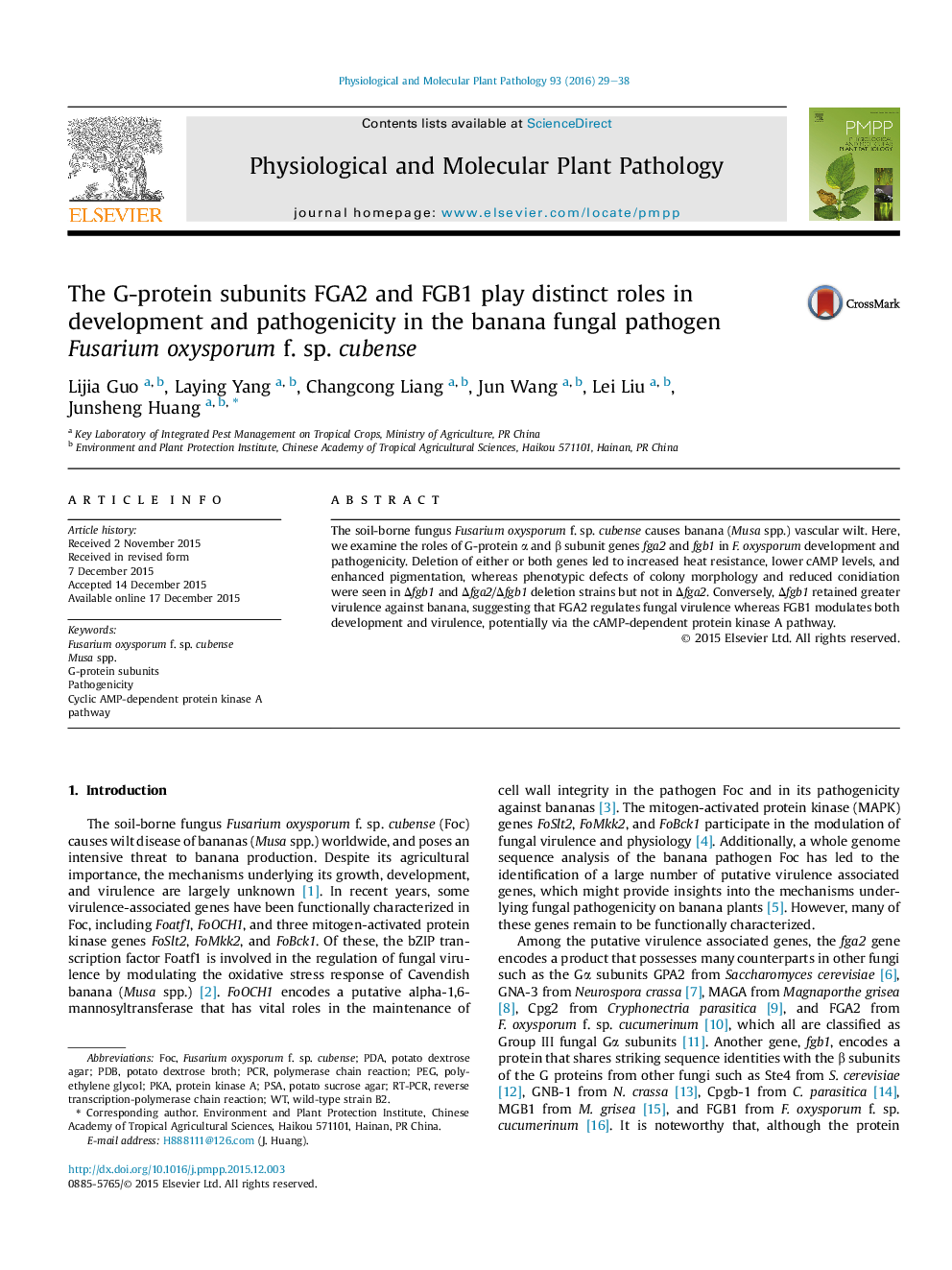| کد مقاله | کد نشریه | سال انتشار | مقاله انگلیسی | نسخه تمام متن |
|---|---|---|---|---|
| 2836215 | 1570846 | 2016 | 10 صفحه PDF | دانلود رایگان |

• The soilborne fungus Fusarium oxysporum f. sp. cubense causes banana wilt disease.
• G-protein α and β subunit genes fgb1 and fga2 are putative virulence-associated genes.
• Deletion of either or both genes increased heat resistance and lowered cAMP levels.
• Δfga2 did not impact development whereas Δfgb1 retained greater virulence.
• Thus, FGA2 and FGB1 regulate virulence vs. development, via the cAMP-PKA pathway.
The soil-borne fungus Fusarium oxysporum f. sp. cubense causes banana (Musa spp.) vascular wilt. Here, we examine the roles of G-protein α and β subunit genes fga2 and fgb1 in F. oxysporum development and pathogenicity. Deletion of either or both genes led to increased heat resistance, lower cAMP levels, and enhanced pigmentation, whereas phenotypic defects of colony morphology and reduced conidiation were seen in Δfgb1 and Δfga2/Δfgb1 deletion strains but not in Δfga2. Conversely, Δfgb1 retained greater virulence against banana, suggesting that FGA2 regulates fungal virulence whereas FGB1 modulates both development and virulence, potentially via the cAMP-dependent protein kinase A pathway.
Journal: Physiological and Molecular Plant Pathology - Volume 93, January 2016, Pages 29–38